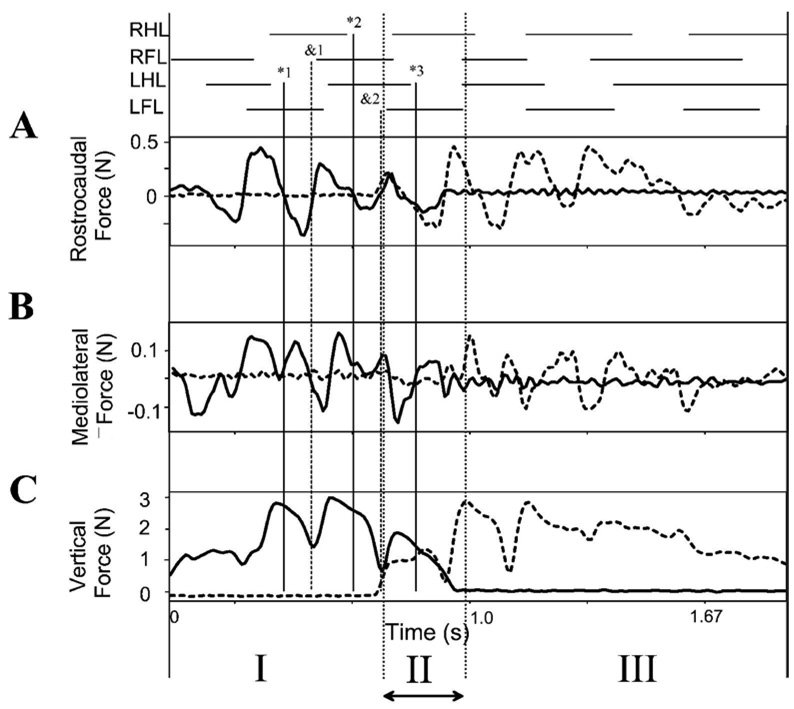Figure 3.
Normal rat. Gait and translational force components. Note that in A, B and C each vertical scale differs. Top: stance phase of each leg. A: Propulsive (rostrocaudal) force: solid line is recording of sensor 1, dotted line is recording of sensor 2. Several zero crossings of the propulsive forces are indicated by fine vertical lines. These are extended to show alignment of rostrocaudal, mediolateral and vertical force patterns with gait pattern. *1, *2 and *3 (solid vertical lines with asterisks indicating negative going zero crossings in rostrocaudal forces) align approximately with hindlimb stance ends. Transitions &1, and &2 (dotted vertical lines aligned to positive zero crossing in rostrocaudal forces and minima in vertical force) align with forelimb stance onsets. B: Mediolateral force: solid line is sensor 1, dotted line is sensor 2. C: Antigravity (vertical) force: solid line is sensor 1, dotted line is sensor 2. Phase I : rat only on sensor 1. Phase II: rat spanning sensors. Phase III: rat only on sensor 2. See Figure 1. Abscissa: Time in seconds.

